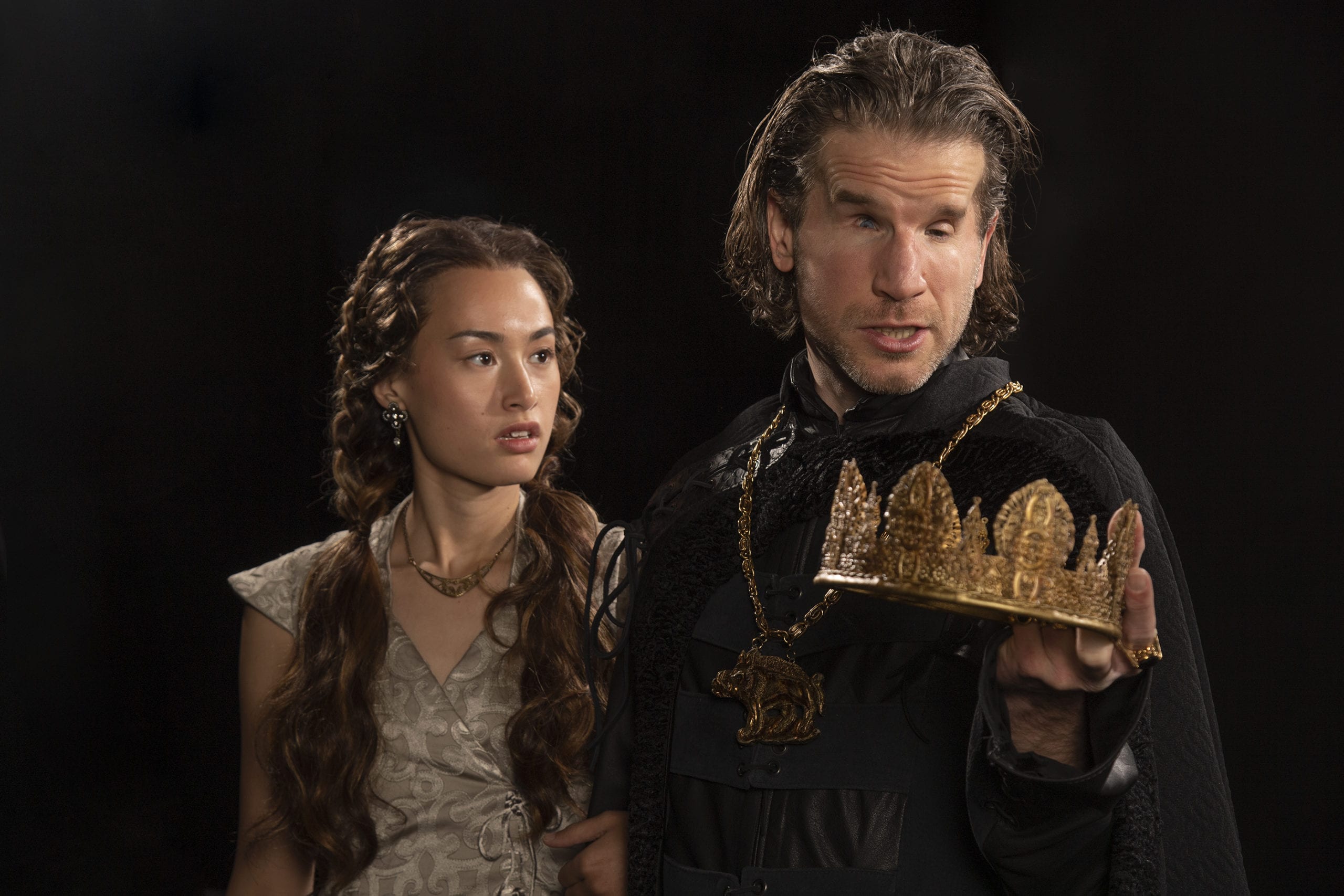CEDAR CITY — “The souls of men are full of fear” when Richard III, Shakespeare‘s most malevolent king, is on the loose. An alarming tension permeates the current production of Richard III at the Utah Shakespeare Festival, and the sense of unease and danger that starts early in the play is never relieved until the murderous king succumbs to his own ignominious death.

Richard III is the ninth installment of the Festival’s program to produce all ten of Shakespeare’s history plays in the chronological order of the events they portray. As such, the story picks up several years after the events of Henry VI, Part 3. Richard has grown up and has a thirst for power. Before the play even begins, he has murdered people who are in front of him in the line of succession to the throne. Richard obtains the throne, but his penchant for killing people has made him unpopular, and he soon must deal with a revolt that threatens his grip on power.
Aidan O’Reilly eschews the traditional portrayal of Richard as the embodiment of evil, and instead tries to make him a realistic person who amorally strives for power. This Richard has a Machiavellian personality that is most apparent when he manipulates others into assisting him in his rise to power. Watching him throw away Buckingham or try to convince the dowager queen Elizabeth (Edward IV’s widow) to allow him to marry her daughter is chilling.

The other cast members are suitably cast in their roles, with the female performers being particularly notable. Melinda Pfundstein was formidable as Margaret, and her wrath and bitterness towards Richard did much to establish the play’s foreboding mood. Sarah Shippobotham was heartbreaking as Richard’s mother (the Duchess of York) as the character mourned the death of three sons at the hand of the fourth. However, the script gave Sarah Suzuki (in the role of Lady Anne, the widow of Richard’s brother, Edward) the widest range of emotions, and Suzuki capitalized on this to give a nuanced performance that showed Anne as a woman trapped by circumstances and forced to make difficult — sometimes unthinkable — decisions.
The male members of the cast also gave fine performances. René Thornton Jr., as the Duke of Buckingham, gives the most multifaceted performance among the supporting cast. Early on, Thronton makes the character fully devoted to advancing his own political standing at all costs, and the enthusiasm for fostering evil is a lesson in how self-interested politicians can support leaders that damage their nation. When supporting Richard has a high moral and financial cost to Buckingham, Thornton shows a character wrestling with his own conscience, and the trepidation Buckingham displays about having Richard’s nephews murdered is its own little psychodrama.

As Lord Hastings, Todd Denning has a heartbreaking moment when his character realizes that he is to be executed and that Margaret’s curse will be fulfilled. Danforth Comins makes the most of his bit part of Sir James Tyrrel, and the self-loathing the Tyrrel feels after murdering Richard’s nephews gives depth to the character.
My biggest qualm with the cast is with Cordell Cole. While he was satisfactory in his roles of the Marquess of Dorset (the son of Edward IV and his Queen, Elizabeth) and Henry, the Earl of Richmond (the future king Henry VII), Cole did not vary his performance enough to distinguish these roles from one another. (My wife and I both failed to realize that Cole was playing two characters until the play was almost over.) Richard III is already Shakespeare’s most confusing history play. Multiple characters named Richard, Edward, and Elizabeth are either seen or referred to, and it is difficult to keep track of the familial and political relationships among the characters. A performance that leads an audience to conflate two characters adds unnecessary confusion.

Cameron Knight’s direction fills the stage and uses the space well. Knight’s best work is in the famous Act V “despair and die” nightmare scene, which would fit in well with any horror movie. The direction is also strong in scenes where supporting characters must deal with the fallout of Richard’s actions. The political machinations work, but they are a much less interesting part of the play for a 21st century American audience. This is a problem because Richard III is, essentially, a political drama.
Knight was successful in creating a somber mood for the play. Aiding him in this endeavor was costume designer Lauren T. Roark, who dressed the cast in drab earth tones and dark colors. Notwithstanding the muted colors, the costume’ layers and detailing were lovely and intricate. Lighting designer Michael Gilliam‘s dim lights and pale hues augmented the dreary setting of the action.
Richard III is a nice production with a strong cast. It looks deceptively easy for the cast, director, and designers to merely follow the script and show Richard’s villainy. But, in reality, it takes a great deal of work, talent, and creativity to create a Shakespeare show that appears to naturally come together. I applaud everyone involved with Richard III and hope that their audience finds the production as satisfying as I do.
[box]The Utah Shakespeare Festival production of Richard III plays various days at 8 PM through September 10 at the Engelstad Shakespeare Theatre on the campus of Southern Utah University. Tickets are $23-80. For more information, visit bard.org.[/box]

